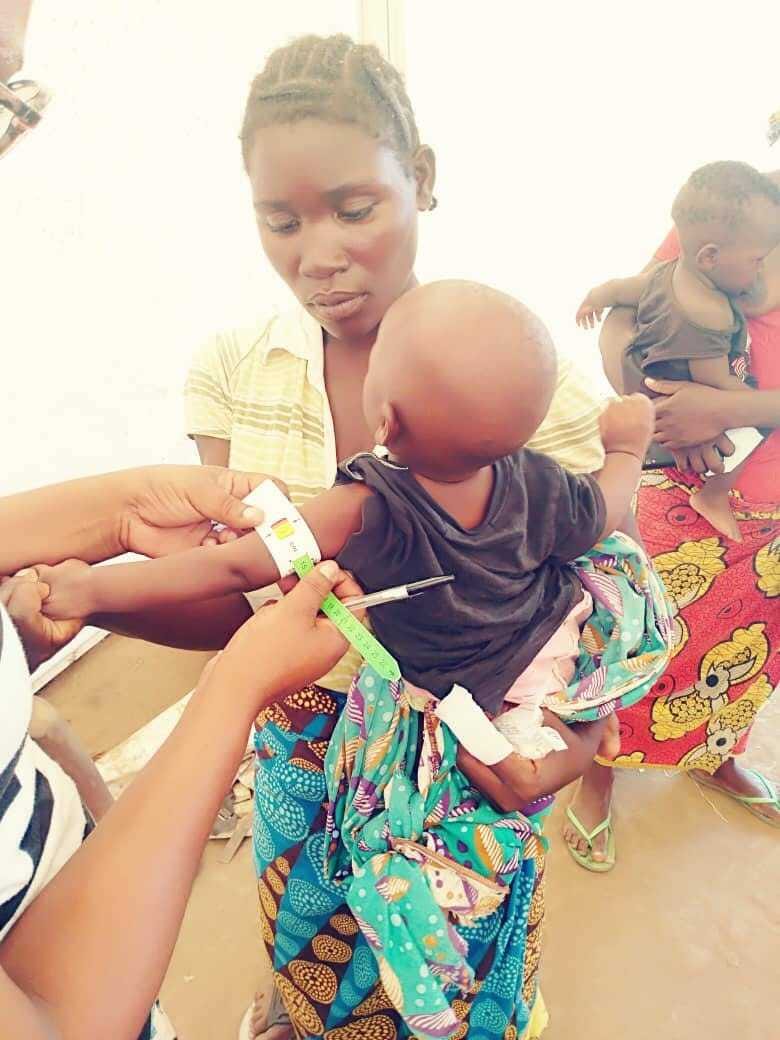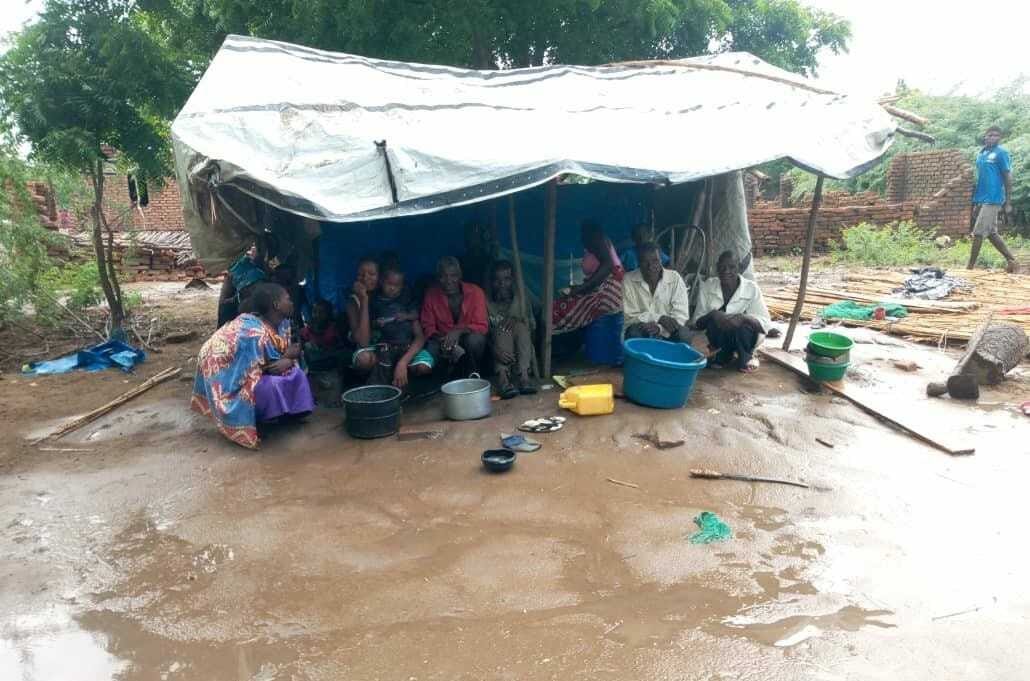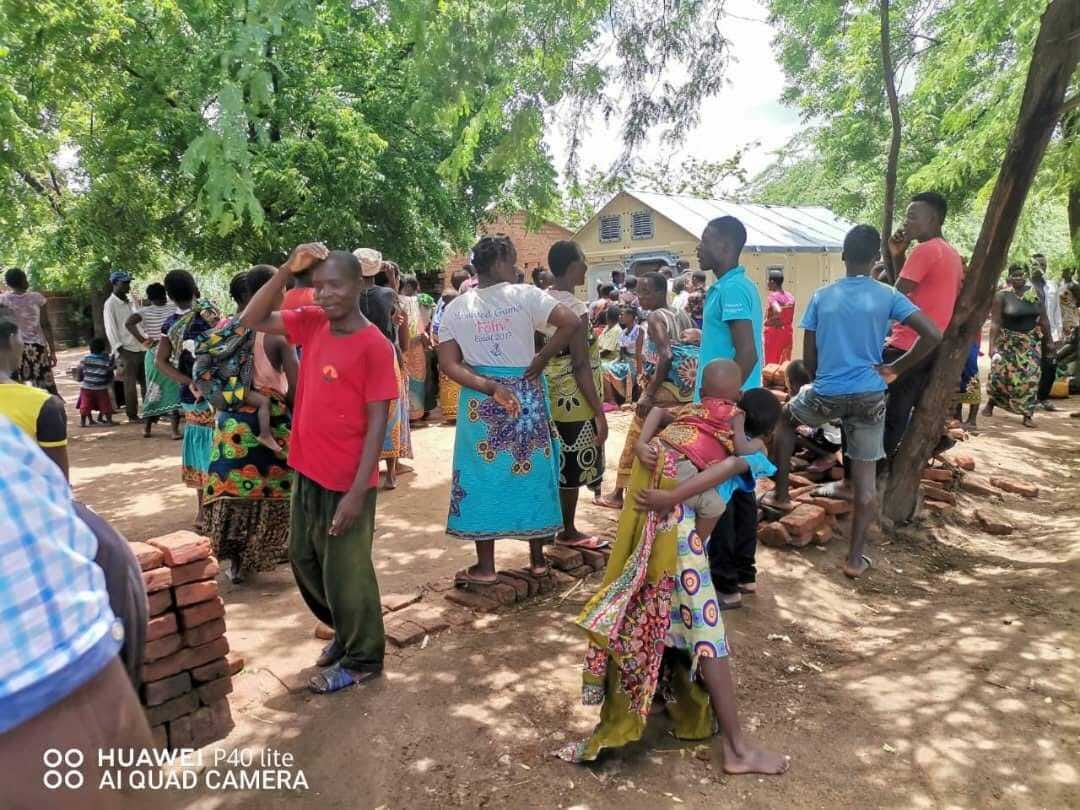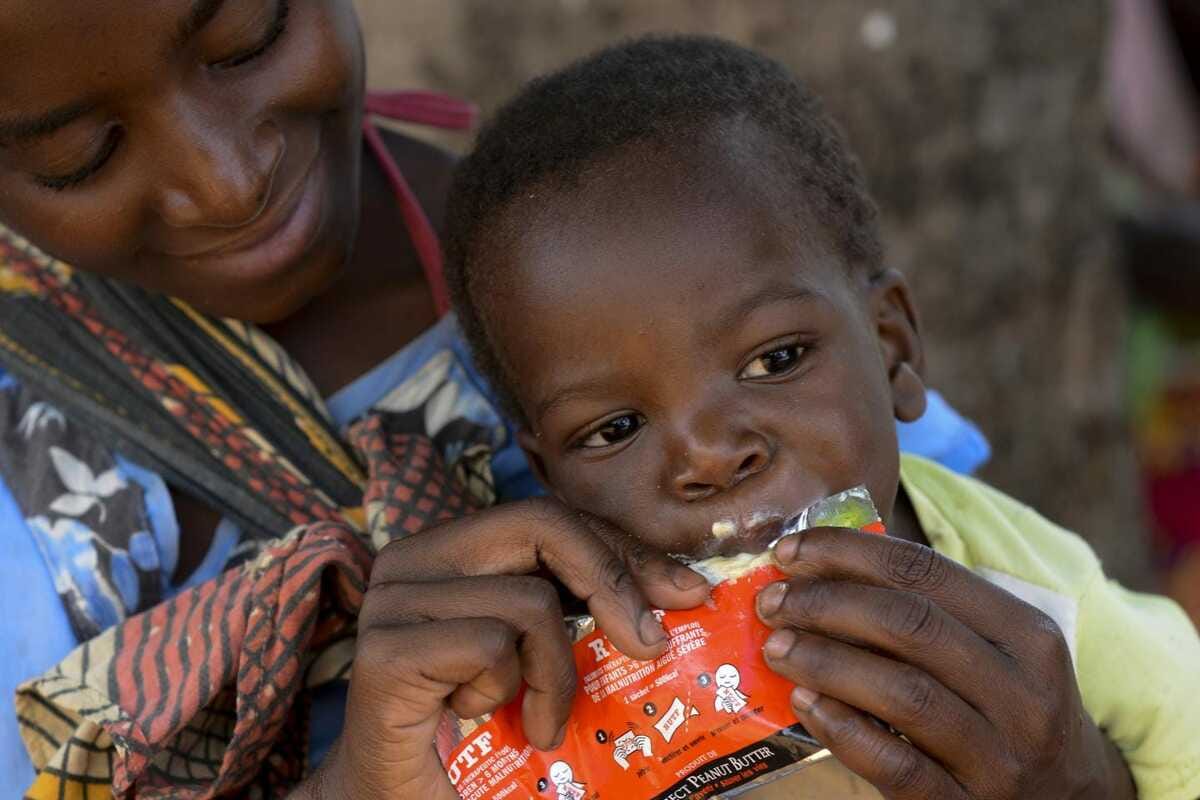
Children usually have no say but are the most affected population during disasters. JOSEPHINE CHINELE exposes the acute malnutrition situation at the flood camps in Chikwawa district due to food shortages.
MALAWI: He lies on a cloth wrapper, in deep sleep. No one around him cares that he is half-naked, he is wearing partly torn clothes showing off his dry, cracked and pale skin.
As three-year-old *Alias Lyson is having this nap under a Mango tree, his mother is carrying his baby brother on her back whilst preparing lunch. She is deeply buried in smoke alongside other women in the same act. Today is the first day in three days people at this flood camp are going to have a proper meal, probably the only meal for the day.
“Some well-wishers came to donate flour and pigeon peas yesterday, hence this meal. We have been here since January and our eating habits have been at the mercy of well-wishers. Three days ago, we had nothing to prepare. We survived on some seasonal vegetables available around here,” laments Elise, one of the Cyclone Ana survivors living at Mapale 2 camp in Nchalo, Chikwawa.
Mapale is one of the 71 disaster camps the district established after Malawi and other Southern African countries experienced tropical cyclone Ana, in mid-January.
According to the Malawi Department of Disaster Management Affairs (DoDMA), the Cyclone affected 994,967 people, killed 46, injured 206 and displaced 221,127 people. The affected districts included Chikwawa, Nsanje, Blantyre, Mulanje, Balaka, Salima, Phalombe, Chiradzulu, Machinga, Mangochi, Neno, Mwanza, Mchinji, and Dedza among other districts.
The Department set up an Emergency Operation Centre (EOC) where government officers and partners are working together to respond to tropical storm Ana effects. A three-month (March-May 2022) response plan was developed to guide a coordinated response.
In collaboration with the affected councils and humanitarian partners, the department has been providing life-saving assistance that includes food and non-food items in all the affected districts. Through the EOC, the camps have also been having mobile clinics rotationally.
The services offered include antenatal care, child vaccination, nutrition screening, Vitamin A and deworming tablets provision to children, family planning, Covid 19 vaccination, Condom distribution, Antiretroviral Therapy and general outpatient services.

Lyson is one of the children who was screened for malnutrition earlier and was given food supplements.
“He finished his Chiponde. I’m waiting for another mobile clinic visit so we should get him some more. He is not sick so I assume everything is fine for now.
Otherwise, he has been eating everything we are all eating at the camp. This meal we are preparing, he will also eat and nothing else until tomorrow,” Elise explains.
Senior Health Surveillance Assistant (HSA) for Chikwawa Nchalo area, Sydney Labeka says children with moderate malnutrition have been put on a diet.
“Those having acute malnutrition, especially those showing edema have been admitted to Saint Montfort Rural Hospital for treatment and other facilities,” he says.
Labeka reveals that NCHACODO, St Montfort and Kalulu health facilities admitted a total of 70 children with acute malnutrition cases in the month of April, “This is the case because of food shortages at the camps. People went there with nothing as their property including food was also washed away by the floods.”

Chikwawa District Health Office Spokesperson, Settie Piriminta says the district experiences floods almost every year and this threatens food security for most households.
“When floods happen, people lose everything including food. This puts the children at risk of malnutrition. We are still compiling data for the whole district but it’s a known fact that we have children having mild to acute malnutrition at our facilities,” he says.
Group Village Head Mapale of Traditional Authority Lundu says the camps have been experiencing hunger and this has affected children the most.
“Since the first Cyclone Ana, people living at the camps have been receiving minimal food aid. This then limits the food they eat because they have to save for the next day,” he says.
According to Chikwawa district health office March data, there are 6,458 under-five children and about a thousand expectant and lactating mothers living at the camps.
Unicef Malawi says there has been a 49 percent increase in admissions of children with severe malnutrition nationwide from 3,953 in March 2021 to 5,904 in March 2022. Chikwawa district had the greatest increase in severe acute malnutrition admissions with over 60 per cent (from 599 in March 2021 to 959 in March 2022).
The organization further notes that children, pregnant and breastfeeding women (PLWs) displaced into camps have an increased risk of acute malnutrition.
The organization supported the Ministry of Health (MoH) through district councils (Nsanje, Chikwawa, Mulanje, Phalombe, Chiradzulu and Balaka) to identify children and PLWs with acute malnutrition and refer them to appropriate care at the nearest health facilities.
Child Health Specialist for Unicef Malawi, Lokesh Sharma says as co-lead for the nutrition cluster, Unicef in collaboration with partners namely, World Food Program (WFP), The Hunger Project, Food and Agriculture Organization (FAO), United Purpose, Save the Children and Story Workshop Trust supported MoH to screen 304, 788 children in camps and wider communities in the six districts.
“Of these, 9,434 had acute malnutrition. 1,933 severely and 7,501 moderately malnourished,” he says in a written questionnaire response.
Sharma says UNICEF supports the MoH to provide lifesaving treatment to children under 15 years with severe acute malnutrition through the provision of community management of acute malnutrition services.

“Currently, there are 637 facilities providing outpatient services for children with severe malnutrition and 102 facilities providing inpatient services for children with complicated cases,” Sharma says.
Public Health Specialist, Elizabeth Mkutumula says in any disaster, children like the most vulnerable groups suffer the most.
“Organisations and individuals often donate based on what they have or find easiest to donate. This mostly happens to be maize flour, rice, beans as opposed to nutrition-dense foods such as vitamin-rich porridge flour or peanut butter,” Mkutumula says.

“It would be best to provide guidelines on what is needed and why when calling for donations. Where possible, well-wishers should consider donating through established and experienced organisations like the Red Cross, and Gift of the Givers and get guidance on what should be donated. This ensures that vulnerable groups, especially children are provided with what is needed in these difficult times,” she suggests.
Mkutumula says people overseeing the camps should have the required skills to ensure that they monitor the well-being of vulnerable groups who are often overlooked if no deliberate guidelines are in place.
“It’s also important to ensure that services like under-five clinics are provided in camps so that issues like malnutrition are noticed early and addressed accordingly, ” Mkutumula says.
There is a need for intensive actions and collaborations in order to deal with issues of malnutrition in Malawi if the country is to achieve goal two of the United Nations Sustainable Development Goals (SDGs).
This goal aims at ending hunger, achieving food security, improving nutrition and promote sustainable agriculture by the year 2030.
The goal among other targets sets to end hunger and ensure access by all people, in particular the poor, those in vulnerable situations, including infants, to safe, nutritious and sufficient food all year round.

“To end all forms of malnutrition, including achieving, by 2025, the internationally agreed targets on stunting and wasting in children under 5 years of age, and address the nutritional needs of adolescent girls, pregnant and lactating women and older persons,” reads part of the SDG two targets.
These targets may be far-fetched dreams for the country if appropriate actions are not taken to address the needs of children like Lyson.
*real name withheld